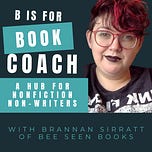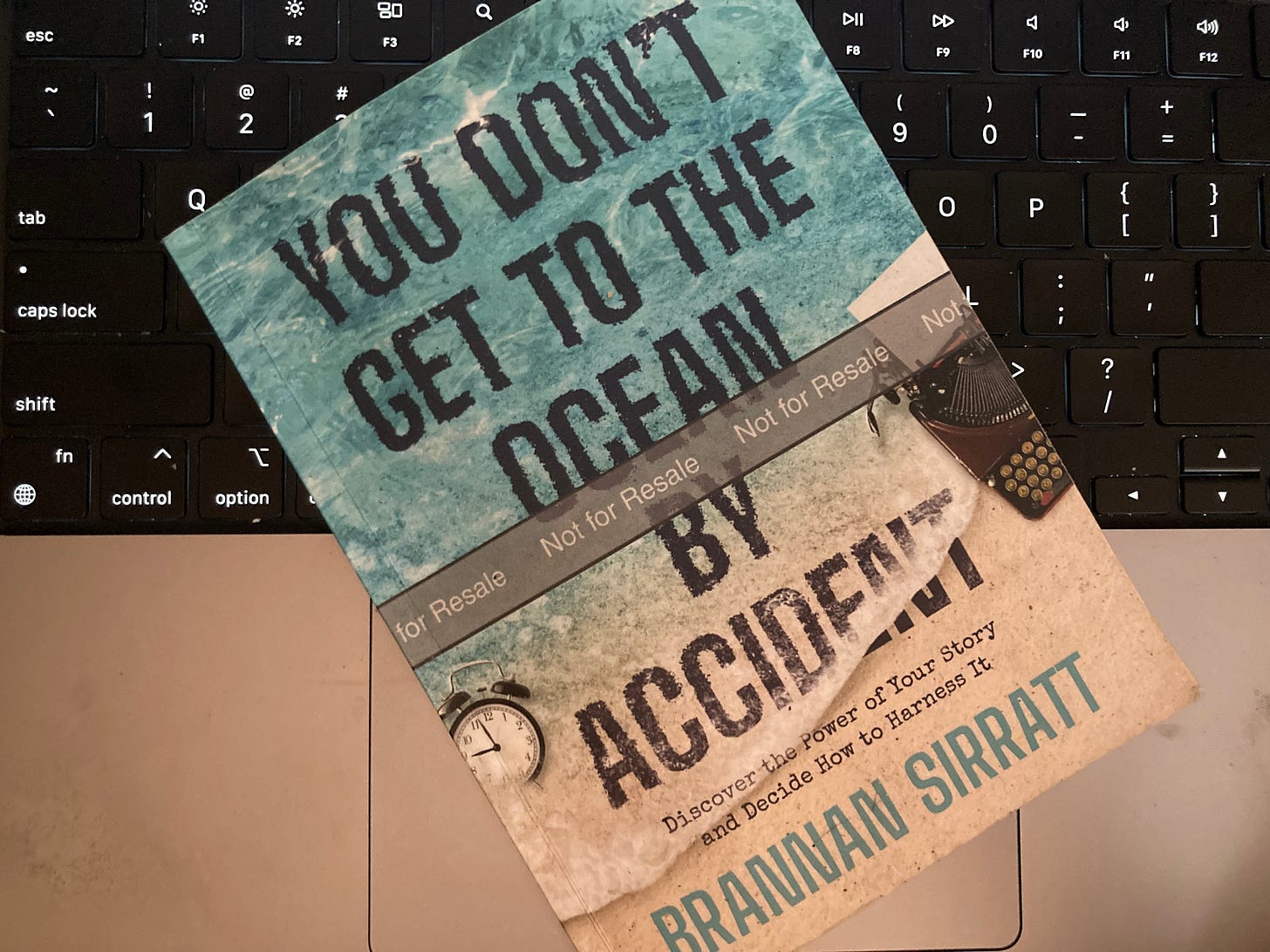Welcome back to a special edition of B is for Book Coach. In these episodes, I’m reading through pieces of You Don’t Get to the Ocean by Accident—the workbook version of the early work I do with all of my authors.
If you want to follow along or jump ahead, pocket-sized copies are available on Amazon, and every Substack subscriber gets a fillable PDF copy as well.
Today, we’re reading from: Your Reader.
The B is for Book Coach space is one way I create direct support for authors as they bring their books to life.
If you’d like to expand that space for yourself and someone else, contributing to the Mutual Momentum fund brings those services to authors who need more than just space to get started.
You can create a one-time boost of Momentum by clicking the button below, or subscribe to keep the forward movement going for us all.
I’m a huge fan of writing by comparison.
Scaffolding exercises (where you mimic the structure and tone of a poem to write something new) unlocked something in me back before I admitted I was a writer, and the school of thought I was trained under via Story Grid is based on finding and learning from the shapes of stories.
This is where I latched on to the Vonnegut “story shapes” speech quoted in the last section, and scaffolding is how I like to break out of blocks to this day.
And also…
(Yes, this is a silly phrase I’m entirely stuck on for emphasis lately—one day you’ll be able to date my works by the phrases that are looping in my head.)
And also, the benefit of these exercises can be lost if you forget to tap back into your connection to your reader before it’s done. Ask me and my overly complicated and needlessly academic drafts how we know.
After naming who you are to your project
and how you’d like to step into the world with your book in hand,
it’s just as important to name who you’re handing it to
and how they’ll show up to that exchange.
You don’t want to change the world. You just want to change their minds. (Or vice versa.)
Notice that I put author and reader identities on equal footing.
The nonfiction world is all about their target readers.
The closer you are to marketing, the harder it is to step into a project without naming some kind of reader.
And yet (there’s another go-to phrase of mine)—the audience only matters so far as you’re planning to communicate with them.
The conversation is what matters.
By this, I mean it’s fine to say you want to reach CEOs, but what are CEOs looking for?
What are they reading?
Are they reading?
Are they reading the kind of material you like to write?
It’s excellent to say you want to reach women, but do you have a specific woman in mind? Have you had this kind of conversation with her before?
This is all doubly true if you’re in the “I just want to reach one person” or “my book is for everyone” camp.
(Yes, it’s one camp—they share a mess hall full of half-finished drafts.)
Once you’ve acknowledged your authorship and authority, there’s nothing left to prove about yourself on the page.
You’re free to communicate your thoughts.
So. Who’s on the other end of the line?
Ask Yourself
First, before trying to name who your reader is, tap back into your idea.
What will be better for your reader because they read your book?
Is there any kind of caution that comes with that benefit?
If they never, ever get access to your book, what will life be like for them?
Who would most be interested in this improvement, in spite of the caution, because of how much they’re feeling that pain without having your book?
What kind of reader is this person? i.e. are they reading for luxury or skimming for takeaways? Are they digging for deep personal change already or are they just here for the tactical?
Who else is writing to this person?
What is their pain point or problem space, having not read your book?
Where have other sources gotten it right, and where have they gotten it wrong?
What does this reader say they want? What do they think will solve their pain point or curiosity?
Do you already have clientele or other interactions with your target or secondary audience?
What kind of avatar or demographic profile do you have for them?
Can you attach this reader to a real life human that you know? (A younger-version-of-you counts!)
Have you brought this topic to their attention before, directly or indirectly? What was helpful, what was not?
Exploration Prompt
Write or record 2-3 pieces of content dedicated to these specific individuals, real or imagined.
Let them know you see them and their struggle.
Hey, thanks for creating this extra space with me today.
To get the rest of the workbook right away, look for You Don’t Get to the Ocean by Accident on Amazon, or subscribe to get a free copy right now.
And as always, whenever your book is ready to emerge, the space we made today will be here waiting for you.
And so will I.










